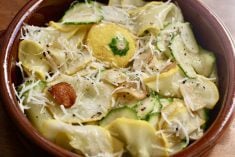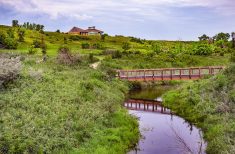Use your own garden flowers to create long-lasting arrangements that will enhance your home. Here are some tips.
Flowers are less likely to wilt when they are gathered in the early morning. Use sharp scissors and a large pail filled with one teaspoon (five mL) of sugar, and two drops of bleach for every two quarts (two L) of water. As you cut each flower, immediately place it in the pail. Then underwater, snip off 1Ú2 inch (1.3 cm) of the stem end. When you have completed the cutting, place the pail in a cool, shaded spot to allow flowers to absorb water for a few hours. When it is time to start arranging, fill your favorite vase with tepid water and cut-flower food. Recut stems to the desired length (this does not have to be done underwater) and remove any foliage that will be below water. Keep the arrangement in a cool location away from any full sun and change the water every two days, adding cut-flower food each time.
Read Also

Farm auctions evolve with the times
Times have changed. The number of live, on-farm auctions is seeing a drastic decline in recent years. Today’s younger farmers may actually never experience going to one.
Summer watering tips
Knowing how and when to water this summer will improve the health of your yard and garden. Daily light waterings are harmful because they allow the roots to grow near the surface of the ground. Watering deeply, but less frequently, allows roots to grow downward, resulting in healthier plants and lawns. About one inch (2.5 centimetres) of water is needed every week and should be applied all at once to soak the ground thoroughly.
Deep-fried vegetables
Dear TEAM: I was wondering if you know where I could find a recipe for battered deep fried vegetables, and if you can freeze for later use? – L.R., Wilkie, Sask.
Dear L.R.: The publication Company’s Coming Appetizers by Jean ParŽ contains five wonderful batter variations. I’ll include one of them.
- Broccoli: Cut into florets. Boil in salted water for about five minutes. Do not overcook because it will be too difficult to handle. Drain. Cool.
- Carrots: Cut into finger strips. Boil in salted water until tender-crisp. Drain. Cool.
- Cauliflower: Cut into florets. Boil in salted water about five minutes. Do not overcook because it won’t handle well. Drain. Cool.
- Celery: Cut into finger strips. Boil in salted water about five minutes. Drain. Cool.
- Green peppers: Cut into strips or rings. Do not cook.
- Mushrooms: Use bite-size if possible. Do not cook.
- Onions: Cut into 1Ú4 inch (11Ú2 cm) slices. Separate into rings. Do not cook.
- Parsnips: Cut into finger strips. Boil in salted water until tender-crisp. Drain. Cool.
- Sweet potatoes: Cut into two or three bite-size pieces. Boil in salted water until tender-crisp. Drain. Cool.
- Zucchini: Cut into wedges about 21Ú2 inches (six cm) long and about 1Ú2 inch (one cm) wide. Do not cook.
Crumb coating
1 egg beaten 1
dry bread crumbs,
finely rolled
fat for deep-frying
Dip food in egg, roll in crumbs, and deep-fry at 375 F (190 C).
Variation: Use 1Ú2 cup (125 mL) flour instead of finely rolled crumbs. You can add salt, pepper, paprika, garlic powder or cayenne pepper.
Colleagues at Jean ParŽ’s office agree that deep fried vegetables are better if they are fresh and not frozen. Their suggestion, however, is to make the batter ahead of time.
Homemade soap
Dear TEAM: I am looking for information and recipes for making homemade soap as a hobby. – V.B., Grimshaw, Alta.
Dear V.B.: Making soap used to be a necessary chore for pioneer women, but today it is more of a hobby. I have located information on soap making for you. The recipe is from the Saskatchewan Women’s Institute publication From Prairie Kitchens which was compiled by Emmie Oddie.
Homemade soap
1 91Ú2 ounce can 270 g
lye flakes
10 cups fat 2.5 L
1Ú2 cup borax 125 mL
3 pints cold water 1.5 L
1 tablespoon 15 mL
ammonia
2 teaspoons 10 mL
baking soda
Dissolve lye in two pints (1 L) cold water. Let cool to 100 F (38 C). Into a small dish put remaining pint (500 mL) of water, ammonia, borax, sugar and baking soda. Warm fat to 95 F (36 C). Very gradually add lye mixture in thin stream to the fat, stirring only slowly with wooden spoon. Then add contents of small dish, stirring for half an hour until thick (like honey). Pour into a wooden box to set. Cut in squares.
I would also like to thank a group from Herschel, Sask. for sharing their soap making with me. They make soap each year as a church/community project. Their recipe is very similar to the above, consisting of lye, fat, borax, water, and Tide detergent.
They warn others to be cautious with the lye. Do not let it touch your skin, and try not to inhale the dust. In fact, they do not allow children near where they are making soap.
Reader requests
Do any of our readers have a recipe for egg substitute that is made from egg whites and flax flour and can be kept in the fridge for a week or so without spoiling? We are also looking for the recipe for magic rocks for kids. They may also be referred to as a coal garden.














